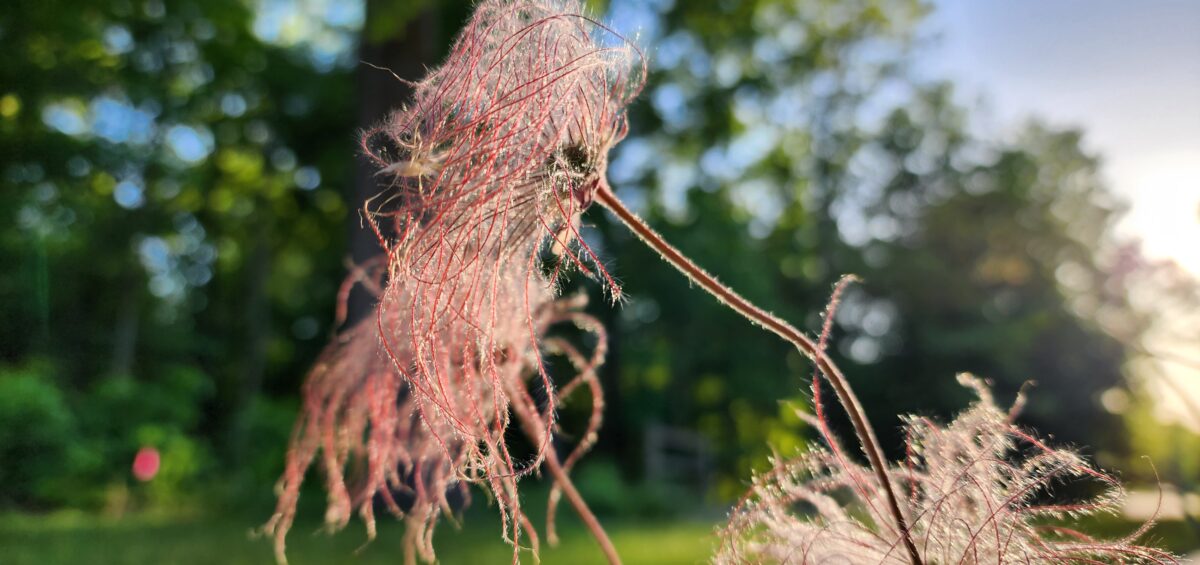During the winter of 2022, I spent hours scheming and dreaming about my landscaping. Numerous flower beds and small garden areas were left untended in 2022, as I had just purchased the property and was working on interior projects. Consequently, the landscaping suffered, and I knew it needed my focus in 2023.
I can’t help but squeeze habitat into any square foot possible, so I laid out elaborate designs for native pollinator gardens throughout the yard. By mid-May, I had spent an inordinate amount of money on native plant plugs, prepped planting areas, and spent several evenings sweating it out getting the plugs planted.
Being the impatient person that I am, I was intensely tracking growth of the native plants, trying to will them into blooming. Imagine my surprise when, after about a month, I noticed some plants being browsed off. It was just one or two at first, and it happened every now and then. After a couple weeks, the browsing had intensified, and some plants were being re-browsed after attempting to regrow.
Throughout this process, I established a food plot out back hoping to attract wildlife into view (and perhaps create a hunting opportunity or two…). Once the forage had established out back, I quickly met my nemesis – a surprisingly bold, mature doe and her two young minions. The first time I caught her by the flower beds, I shooed her away, but the effect didn’t last long. Along with the audacious daylight strolls into the yard to mock my hard work, the doe and her fawns would stroll through again under the cover of darkness to leisurely select the tastiest morsels.

Unfortunately for me, it took all of two sightings for this disrespectful whitetail to be christened as “Daphne” the doe. Once her minions were christened as “Daisy” and “Darrell,” I knew I was toast. My better half gave me strict orders that these three are off-limits during hunting season, so my options for “handling” this problem were non-existent.
I had a sneaking suspicion that Daphne was on to this, and she flaunted it with impunity. To illustrate just how bold she became, I pulled into the driveway one evening well before dark to find Daphne munching happily by one of the gardens.
Seeing the truck, she hopped away about 50 feet and parked herself. I stepped outside and chastised her for ruining my hard work. She got nervous and took a few steps into the woods, but she stopped again and stared.
After scolding her, I went inside and peeked out the window, and sure enough, Daphne sauntered back towards the pollinator garden, this time with her minions in tow. All I could do was hang my head.
Daphne taught me a lot about whitetail foraging preferences last summer, and there are a few plants she can’t seem to resist.
Daphne taught me a lot about whitetail foraging preferences this summer, and there are a few plants she can’t seem to resist.
By far, her favorites are the blazing star species, with very few of the poor things making it to flowering. She has systematically targeted these multiple times this summer, with one plant completely keeling over after a third attack.
She also has a major hankering for native asters, with New England aster and smooth aster apparently being delicious. Across the board, she and her lackeys have browsed every single aster at one point. These plants must have incredible nutrient reserves because a couple defied her destruction to somehow regrow and bloom. When they were smaller, Daphne was also hell on the sunflower species, with stiff sunflower her usual target.
The biggest surprise came from what she didn’t browse. Throughout the entire summer, I haven’t found a single prairie clover, purple or white, that was browsed. I assumed these would be decimated first, but for some reason, they remain untouched.
All satire aside, these observations confirmed something I long assumed but couldn’t prove – native prairies are high-quality deer habitat. Keep in mind, this deer specifically went through a green field of brassicas and clovers just to stroll through the yard to browse on native forbs.
It also reaffirmed something research has long demonstrated: deer are picky eaters. Deer can eat virtually anything – they’re basically large goats. And yet, when they have options, they’re pickier than a toddler trying out vegetables.
Food plots consume reams of outdoor press but comprise only a fraction of a deer’s overall diet. When they’re available, deer will often take native forbs over food plots. Deer follow what their bodies tell them they need for nutrients and minerals, and they have a knack for picking the exact plants that contain the right balance.
If you’re planning out habitat projects, or even planning a hunt, keep native prairie in mind. Apart from being quality cover and habitat for countless species, it can make for quality deer food at certain points of the year. Adding this diversity can be a boon for everything from whitetails to monarchs.

